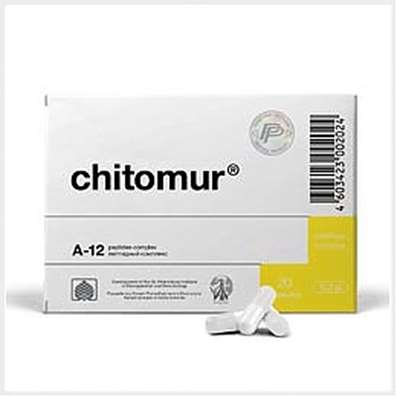Hereditary diseases
05 Nov 2016
Geneticist Dr. Doping tells about genetic mutations and classification of hereditary diseases. The hereditary disease characterized by congenital and family? What are the different types of hereditary diseases?
If we define in general terms, the genetic disease - a disease caused by a genetic, chromosomal mutation epimutation. Such diseases are quite rare, but due to the fact that many of them, their total rate is quite high. They differ from other diseases - here, it is usually possible to find the exact cause of the disease is associated with damage to the unit of inheritance.
Differ hereditary and congenital diseases. Genetic diseases are not always innate, they can occur at different ages: at birth, during childhood, even on the fifth, sixth, seventh decade of life. Some congenital diseases are not hereditary. In particular, some malformations may be associated with the action of harmful factors on the fetus during pregnancy, and the reason for their action is just that, and not damage the hereditary apparatus.
It is also sometimes confused hereditary diseases and family. Genetic diseases can be family, handed down from generation to generation or meeting with several members of one family. But very often hereditary disease may occur in the family of one man can be born only one patient. This can be done if a mutation arises again. A classic example - is Down syndrome, when there is a genomic mutation, there is an extra 21th chromosome, and for the most part this is the only case in the family. But the situation may be quite different. There are mutations that are not appearing on from generation to generation, can be transferred as long as the carrier of this mutation does not meet the wife with a mutation in the same gene, and then they have a chance of having a baby patient.
Hereditary diseases separated by where the mutation occurs. There are chromosomal disease - a disease that is associated with the violation of chromosomes. Perhaps an excess of chromosomes can be a drawback. Maybe a whole extra chromosome - an example of Down syndrome, it is an extra 21th chromosome. A fragment may be lost or be superfluous moiety. One example of this - cri du chat, a defect, a deletion site of one arm of the fifth chromosome. Sometimes, on the contrary, the lack of an entire chromosome. For example, Shereshevskii syndrome - Turner, when the karyotype of a person does not have 46 chromosomes, as observed in normal and only 45 lost one X-chromosome, and it also leads to pathology, too, there is a hereditary disease.
To improve the quality of life you need just buy Peptides and Cytamines, Meldonium, Cogitum, Cerebrolysine.
There are monogenic diseases that are associated with mutations in a specific gene, and these monogenic inherited diseases by Mendelian laws. In accordance with the type of inheritance is divided into autosomal dominant, autosomal recessive or sex-linked.
If the mutant gene is in the sex chromosome, there is a special type of inheritance when more may be affected by one gender.
Linked recessive mode of inheritance, the classic example - is hemophilia, which is inherited, for example, in the royal houses of Europe, and even reached the king's house, thanks granddaughter of Queen Victoria - it affects boys and transmit the disease are women.
Furthermore, isolated mitochondrial diseases arise when a mutation in mitochondrial DNA. These diseases are not inherited by Mendel. There's a special type of inheritance, it is even called mitochondrial, maternal mode of inheritance, because mitochondria are passed to the cytoplasm, they are located in the cytoplasm and are transmitted from a woman, because it is the egg cell contains cytoplasm with mutant mitochondria and sperm cell cytoplasm contains almost no so the mitochondria from Pope to almost fall.
There are still some classes of hereditary diseases, and they differ from all others is the fact that this type of inheritance, it can affect all the organs of the system and can occur in the practice of any doctor. Often for hereditary diseases characterized by the defeat once many organs and systems, and such a state is called a hereditary syndrome.
Can highlight hereditary diseases in character defeats an exchange of some substance. These may be diseases of amino acid metabolism, lipid metabolism, carbohydrate metabolism, and so on. Classifications of hereditary diseases in fact there is a huge amount.
The fact that there are hereditary diseases, the man knew a long time ago, and descriptions of some hereditary diseases are known in the ancient books. For example, in the Bible there is an indication of a disease similar to hemophilia obviously - there is discussed, someone can be cut, and if someone was bleeding, the male relatives on circumcision should not be done.
For a long time did not know what kind of material cause of these diseases. It was believed that these diseases are caused by the damned race, punishment for any transgressions. Understanding that hereditary diseases are associated with the material defeat of chromosomes or genes, it's in the XX century. At the beginning of the XX century, Archibald Garrod was formulated the concept of inherited metabolic disorders, where he studied homogentisuria, before the gene was discovered. Then, when the chromosomes were discovered, a little later the famous French scientist Lejeune has shown that some diseases can be caused by an imbalance of chromosome material. In particular, he had just discovered that Down syndrome is caused by the presence of an extra chromosome in every cell of the body.
Special breakthrough in the study of hereditary diseases occurred after the program was implemented, "Human Genome", when they began to open up new diseases and new genes, the accumulation of knowledge began to occur with tremendous speed. The "Human Genome" provided an opportunity not only to find the genes, mutations in which lead to certain diseases, but also give physicians the ability to diagnose the disease accurately. Because the mutation can be found in every cell of the body, at any stage of its development - we talked about the beginning of the disease in later life, which can develop in the sixth, the seventh decade of life. But a mutation that leads to the disease, can be detected in the prenatal period, as can be screened in the first trimester of pregnancy - 9-12 weeks.
Diagnosis of hereditary diseases, thanks to the achievements of "Human Genome" and the development of modern technology, very advanced, and there was a dissonance between what can be diagnosed, and how these diseases can be treated. Hereditary diseases for a long time been practically sentence, because there was no understanding of what actually happens in the body, why develop or that the clinical picture. Until now, many diseases it remains a problem. But when they began to learn which genes produce any products as these products will change if a given mutation, it provided an opportunity to understand the molecular mechanisms of the disease and find a target for a particular therapy.
Treatment of hereditary diseases is still a major problem.
For some diseases treatment methods are found, and found pathogenetic treatment. For example, if we know that does not work some kind of enzyme and accumulates a substance that poisons the body as a result. For example, the pathogenesis of this disease is quite frequent as phenylketonuria - it does not work the enzyme, phenylalanine accumulates degradation product, and if nothing is done, the child develops severe mental retardation, neurological manifestations. But it is possible to limit the intake of phenylalanine from food, then this circle can be broken. And such a treatment diet therapy is used not only for PKU, but also in some other inherited metabolic diseases. But phenylketonuria - a frequent disease, and we are here it is important to identify the disease very early, not yet irreversible changes due to the toxic effect of Productoria until the brain has not yet struck. To do this, apply the screening methods detect in newborns and patients with phenylketonuria as soon as possible begin the correction. This makes it possible for these children to grow up completely indistinguishable from their healthy peers.
If we talk about the problems that still remain, of course, one of the main - is the problem of the treatment of other inherited diseases. Now we hear a lot of orphan diseases. Hereditary diseases almost all orphan and rare. For those diseases that are found and for which treatments, these therapies are sometimes very expensive, and the problem of treatment of these diseases remains.
One treatment approach is the development of gene therapy techniques. These methods pinned very high hopes, but unfortunately, a great success in this area yet. Nevertheless, the emergence of new technology with the genome, in particular genome editing technology gives another the hope that this issue will receive a decision.
There are problems not so much scientific as social and organizational problems of providing care to these patients. Most of these diseases today has no effective treatment, but it does not mean that patients can not be treated, it is not necessary to treat, they can not help. This requires some effort of society to develop approaches to rehabilitation for symptomatic therapy for these patients received care.
Another problem - is to help the families, because genetic disease - it is not a disease per person. In the medical-genetic counseling states that the patient - it is a family. The family, in which there is a hereditary disease patient should receive medical and genetic counseling to decide for themselves, to pass her genetic testing or not, or not to have children, whether to go to prenatal diagnosis. And the problems of organizational, social, health care problems these families, at least in our country are very relevant and are not always resolved.

 Cart
Cart





